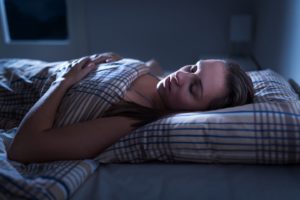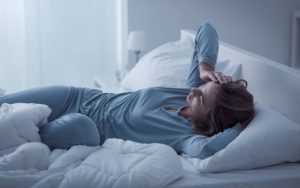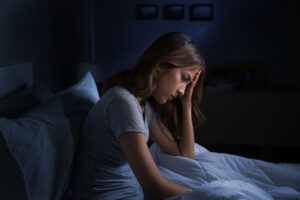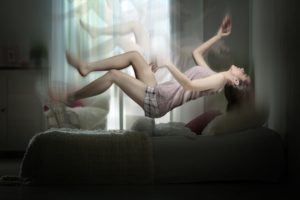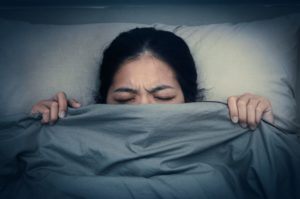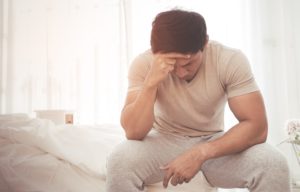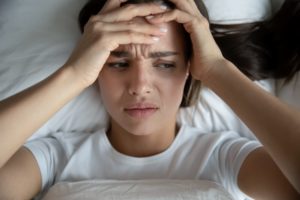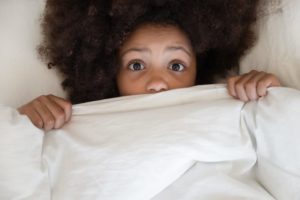Sleep Texting
Most readers are familiar with the concept of sleepwalking, and have maybe even heard someone sleep talking before. With nearly universal smartphone ownership in the U.S., texting has emerged as another behavior some people occasionally engage in while they sleep. We discuss what causes sleep texting, strategies to prevent texting while you sleep, and how to know if you should consult your doctor about this issue.
What Is Sleep Texting?
Sleep texting refers to a phenomenon in which a person replies to text messages or initiates sending messages while they are technically asleep. Sleep texting is not a stand-alone diagnosis. Instead, it is generally grouped in with other parasomnias , a term that refers to abnormal behaviors that occur during sleep, while falling asleep, or while waking up. As with other parasomnias, people who report sleep texting often do not recall their behaviors the next day.
Causes
Since there are not any research studies specifically looking at sleep texting, we cannot yet be certain about its cause. However, research on other parasomnias provides hints at the mechanisms behind sleep texting.
Parasomnia behaviors can take place during rapid eye movement (REM) sleep, non-rapid eye movement (NREM) sleep and consciousness. Certain parasomnias are most commonly associated with specific states of sleep. For example, the confusional arousals that often lead to sleepwalking tend to happen during NREM sleep, while suddenly acting out dreams is associated with REM sleep. Sleep talking can occur during NREM or REM sleep. Sleep paralysis, in which a person’s mind is awake while their body is still paralyzed, occurs when partial wakefulness overlaps with REM sleep. Given the complexity of the behavior, it is most likely that sleep texting occurs out of NREM sleep.

Regardless of when in the sleep cycle sleep texting occurs, certain factors might make its occurrence more likely. The following factors increase a person’s risk of experiencing parasomnias in general:
- Younger age
- An immediate family member who experiences parasomnias
- Sedative medications
- Certain other sleep disorders, such as sleep apnea and periodic limb movement disorder
- Alcohol consumption
- Fever
- Stress
- Sleep deprivation
- External noises, including the chime of a text message
How to Stop Sleep Texting
Although the causes of texting while asleep are not yet certain, existing research on parasomnias in general suggests there are multiple actions a person can take to reduce or prevent parasomnias from occurring.
Get Plenty of Sleep
Since parasomnias can be triggered by sleep deprivation, obtaining enough sleep is important when trying to prevent them. Experts recommend that teenagers sleep 8 to 10 hours each night and adults sleep at least 7 hours. In addition to potentially preventing sleep texting, sleeping the recommended amount can help you feel well rested and maintain good health.
Shut Off Your Phone
Shutting off, silencing, or placing your phone in another room may prevent you from sleep texting, as external noises sometimes trigger parasomnias.
One study found that 98% of teenagers regularly send a text after 8 p.m. and 70% send a text after 10 p.m. These texting habits suggest that teens may keep their phone in or near the bed with notifications on at nighttime.
Studies show that phone use or other screen time negatively affects the sleep of children , teenagers, and college students alike. Indeed, a study on college students found that 26% reported sleep texting, and these students were more likely to keep their phone in bed with them. Thus, turning your phone off, putting it further away, or keeping it out of your bedroom altogether at night may also improve your sleep quality.
Check Your Medications
Sedative medications and supplements can increase your risk of parasomnias. If you are currently taking sedatives, contact your doctor or pharmacist to see if there is an alternative that is less sedating or not a sedative.
Reduce or Avoid Alcohol Consumption
Not only does it disrupt sleep , but alcohol is also a sedative, which means it can trigger parasomnias in some people. If you drink regularly and find yourself sleep texting, try reducing your alcohol consumption or avoiding alcohol altogether.
Treat Other Sleep Disorders
Your risk for parasomnias increases when you have other sleep disorders, such as obstructive sleep apnea or periodic limb movement disorder. These conditions fragment sleep and may contribute to the mixed states that contribute to parasomnias. If you have been diagnosed with one of these disorders, follow the treatment plan set by your doctor to reduce this risk factor.
When to Talk to Your Doctor
Sleep texting may cause anxiety or lead to embarrassing situations, but it probably is not a cause for concern if it only happens once or twice. Although sleep texting has not been fully researched, the similar phenomenon of sleep talking is extremely prevalent, with up to 66% of people experiencing it at some point in their lifetime. However, if sleep texting becomes a common occurrence or happens alongside other symptoms, it might be time to schedule a doctor’s visit.
Your doctor can help you determine why you are experiencing a parasomnia. Keeping a sleep diary and writing out your symptoms and sleep history before your visit can help your doctor gain a clearer picture of your situation. If someone has witnessed you sleep texting, you might want to bring them to your appointment or have them write down what they saw.
A doctor might order a sleep study, called polysomnography, to learn more about what is occurring as you sleep. They might also ask questions and order tests to rule out other medical issues, such as seizures and anxiety disorders.

Still have questions? Ask our community!
Join our Sleep Care Community — a trusted hub of sleep health professionals, product specialists, and people just like you. Whether you need expert sleep advice for your insomnia or you’re searching for the perfect mattress, we’ve got you covered. Get personalized guidance from the experts who know sleep best.
References
7 Sources
-
Bollu, P. C., Goyal, M. K., Thakkar, M. M., & Sahota, P. (2018). Sleep medicine: Parasomnias. Missouri Medicine, 115(2), 169–175.
https://pubmed.ncbi.nlm.nih.gov/30228711/ -
Dowdell, E. B., & Clayton, B. Q. (2019). Interrupted sleep: College students sleeping with technology. Journal of American College Health: J of ACH, 67(7), 640–646.
https://pubmed.ncbi.nlm.nih.gov/30365360/ -
National Center for Chronic Disease Prevention and Health Promotion, Division of Population Health. (2017, March 2). How much sleep do I need? Centers for Disease Control and Prevention., Retrieved August 16, 2021, from
https://www.cdc.gov/sleep/about_sleep/how_much_sleep.html -
Troxel, W. M., Hunter, G., & Scharf, D. (2015). Say “GDNT”: Frequency of adolescent texting at night. Sleep Health, 1(4), 300–303.
https://pubmed.ncbi.nlm.nih.gov/26981583/ -
Hisler, G. C., Hasler, B. P., Franzen, P. L., Clark, D. B., & Twenge, J. M. (2020). Screen media use and sleep disturbance symptom severity in children. Sleep Health, 6(6), 731–742.
https://pubmed.ncbi.nlm.nih.gov/32861729/ -
Garmy, P., & Ward, T. M. (2018). Sleep habits and nighttime texting among adolescents. The Journal of School Nursing: The Official Publication of the National Association of School Nurses, 34(2), 121–127.
https://pubmed.ncbi.nlm.nih.gov/28421911/ -
He, S., Hasler, B. P., & Chakravorty, S. (2019). Alcohol and sleep-related problems. Current Opinion in Psychology, 30, 117–122.
https://pubmed.ncbi.nlm.nih.gov/31128400/



